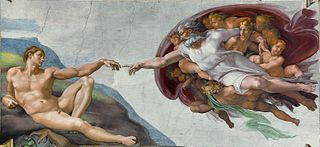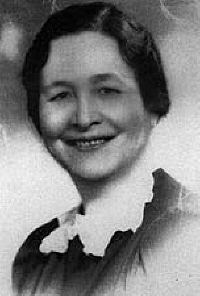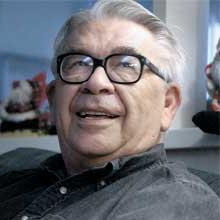Cryptozoology is a pseudoscience and subculture that aims to prove the existence of entities from the folklore record, such as Bigfoot, the chupacabra, or Mokele-mbembe. Cryptozoologists refer to these entities as cryptids, a term coined by the subculture. Because it does not follow the scientific method, cryptozoology is considered a pseudoscience by the academic world: it is neither a branch of zoology nor folkloristics. It was originally founded in the 1950s by zoologists Bernard Heuvelmans and Ivan T. Sanderson.

Oral tradition, or oral lore, is a form of human communication wherein knowledge, art, ideas and cultural material is received, preserved and transmitted orally from one generation to another. The transmission is through speech or song and may include folktales, ballads, chants, prose or verses. In this way, it is possible for a society to transmit oral history, oral literature, oral law and other knowledge across generations without a writing system, or in parallel to a writing system. Religions such as Buddhism, Hinduism and Jainism, for example, have used an oral tradition, in parallel to a writing system, to transmit their canonical scriptures, secular knowledge such as Sushruta Samhita, hymns and mythologies from one generation to the next.
Salishan oral narratives consist of the body of traditional narratives of the speakers of the Salishan languages, who inhabit British Columbia, Canada and in Washington, Idaho and Montana in the United States. Each of the many peoples in these groups have their own stories and each storyteller may interpret them in their own ways, but many of the stories of the Salish peoples are similar and share themes and characters, and share their historical origins in the proto-Salishan culture long ago. The earliest descriptions of the oral traditions of Salishan peoples were the collections of Nuxalk mythology by anthropologist Franz Boas collected in the water

Young Earth creationism (YEC) is a form of creationism which holds as a central tenet that the Earth and its lifeforms were created in their present forms by supernatural acts of a deity between approximately 6,000 and 10,000 years ago. In its most widespread version, YEC is based on the religious belief in the inerrancy of certain literal interpretations of the Book of Genesis. Its primary adherents are Christians who believe that God created the Earth in six 24-hour days in contrast with old Earth creationism (OEC), which holds literal interpretations of Genesis that are compatible with the scientifically determined ages of the Earth and universe.

Ella Cara Deloria, , also called Aŋpétu Wašté Wiŋ, was an educator, anthropologist, ethnographer, linguist, and novelist of European American and Native American ancestry. She recorded Native American oral history and legends, and she also contributed to the study of Native American languages. In the 1940s, Deloria wrote a novel titled Waterlily, which was published in 1988, and republished in 2009.
Native American studies is an interdisciplinary academic field that examines the history, culture, politics, issues, and contemporary experience of Native peoples in North America, or, taking a hemispheric approach, the Americas. Increasingly, debate has focused on the differences rather than the similarities between other Ethnic studies disciplines such as African American studies, Asian American Studies, and Latino/a Studies. In particular, the political sovereignty of many indigenous nations marks substantive differences in historical experience from that of other racial and ethnic groups in the United States and Canada. Drawing from numerous disciplines such as anthropology, sociology, history, literature, political science, and gender studies, Native American studies scholars consider a variety of perspectives and employ diverse analytical and methodological tools in their work.

The mythology of the Miwok Native Americans are myths of their world order, their creation stories and 'how things came to be' created. Miwok myths suggest their spiritual and philosophical world view. In several different creation stories collected from Miwokan people, Coyote was seen as their ancestor and creator god, sometimes with the help of other animals, forming the earth and making people out of humble materials like feathers or twigs.
Cahuilla traditional narratives include myths, legends, tales, and oral histories preserved by the Cahuilla people of the Colorado Desert and Peninsular Ranges of southern California.
Kumeyaay traditional narratives include myths, legends, tales, and oral histories preserved by the Kumeyaay people of southern California and northwestern Baja California.
Quechan traditional narratives include myths, legends, tales, and oral histories preserved by the Quechan (Yuma) people of the lower Colorado River area of southeastern California, southwestern Arizona, and northeastern Baja California.
Serrano traditional narratives include myths, legends, tales, and oral histories preserved by the Serrano people of the San Bernardino Mountains and southern Mojave Desert of southern California, originally in the Serrano language.

Hinduism includes a range of viewpoints about the origin of life, creationism and evolution. There is no single story of creation, due to dynamic diversity of Hinduism, and these are derived from various sources like Vedas, some from the Brahmanas, some from Puranas; some are philosophical, based on concepts, and others are narratives. The Rigveda mentions the Hiranyagarbha as the source of the creation of the Universe, similar to the world egg motif found in the creation myths of many other civilizations. It also contains a myth of proto-Indo-European origin, in which the creation arises out of the dismemberment of a cosmic being who is sacrificed by the gods. As for the creation of the primordial gods themselves, the Nasadiya Sukta of Rigveda takes a near-agnostic stand, stating that the Gods came into being after the world's creation, and nobody knows when the world first came into being. In the later Puranic texts, the creator god Brahma is described as performing the act of 'creation', or more specifically of 'propagating life within the universe'. Some texts consider him equivalent to the Hiranyagarbha or the Purusha, while others state that he arose out of these. Brahma is a part of the trinity of gods that also includes Vishnu and Shiva, who are responsible for 'preservation' and 'destruction' respectively.
Philip Joseph Deloria is an historian who specializes in Native American, Western American, and environmental history. He is the son of scholar Vine Deloria, Jr. (Dakota) and a descendant of Civil War General Alfred Sully and painter Thomas Sully. Deloria is the author of prize-winning texts, Playing Indian (1999) and Indians in Unexpected Places (2004). Deloria received his Ph.D. in American Studies from Yale University and currently teaches in the Department of History at Harvard University.

Custer Died for Your Sins: An Indian Manifesto, is a 1969, non-fiction book by the lawyer, professor and writer Vine Deloria, Jr. The book was noteworthy for its relevance to the Alcatraz-Red Power Movement and other activist organizations, such as the American Indian Movement, which was beginning to expand. Deloria's book encouraged better use of federal funds aimed at helping Native Americans. Vine Deloria, Jr. presents Native Americans in a humorous light, devoting an entire chapter to Native American humor. Custer Died for Your Sins was significant in its presentation of Native Americans as a people who were able to retain their tribal society and morality, while existing in the modern world.
Bruce Elliott Johansen is an American academic and author. He is the Frederick W. Kayser Professor of Communication at the University of Nebraska at Omaha and is the author or editor of many books and articles, notably on environmental and Native American issues.
Donald Andrew Grinde Jr., a professor at the University at Buffalo, New York, is noted for his scholarship and writing on Native American issues.
Inés M. Talamantez is a Mescalero ethnographer and theologian. She is professor of religious studies at University of California, Santa Barbara (UCSB). She is an expert on Native American religion and philosophy.
Ella Elizabeth Clark was an American educator, author, and Professor Emerita of English. Although Clark was not a trained anthropologist or folklorist, she collected large numbers of American Indian and First Nations oral traditions and made them available to a wide readership.










